Ljubljana related
A fire broke out at Surovina waste management site in Tezno on Monday, prompting about 250 firefighters to work overnight. According to 24ur, this is the third and the biggest fire that broke out at the site in the last two weeks.
About five thousand tons of mixed waste designated as “alternative fuel”, including plastic, tyres and waste textiles, was stored in a 3500 m2 hall, built following a vast 2013 fire. Unofficially, the cause of the most recent fire that broken at about noon this Monday was self-ignition.
Almost all of the waste, as well as the hall’s roof, which collapsed inwards, burned in the fire. By now it has already been taken out, although firefighters continue to look for smouldering spots hiding under the charred garbage.
Maribor’s Mayor Saša Arsenovič emphasized that Surovina wasn’t a local governments company but a private waste management enterprise.
In 2018 Gorenje sold the company to Eko Surovina, which is in ownership of Rastoder Ltd, the company owned by the banana tycoon Izet Radtoder. The company then changed its name from Surovina Gorenje to Surovina LTD.
In a press release the Ministry of Environment said today that they regret that another fire occurred at a waste collection facility, and that it is aware of the pressing issue of the packaging waste piling up in Slovenia, an ongoing problem for the past several years.
Meanwhile citizens of Tezno are signing a petition in which they point to the air pollution these waste fires cause. “How much longer are we going to tolerate the pollution of our environment? Were we ever asked to give permission for dumping sites of two large companies (Surovina and Snaga) to be placed nearby our community?” they wrote in their petition.
STA, 26 February 2020 - Coarse particles (PM10) are seen as the biggest air pollutant in Slovenia with data from the Environment Agency's monitoring stations showing the highest concentrations for urban areas of Celje, Murska Sobota, Zagorje ob Savi, Ljubljana, Maribor, Novo Mesto and Trbovlje.
Celje most polluted city, but getting cleaner
With a toxic industrial legacy, Celje stood out last year as the only location in Slovenia to exceed limit daily PM10 concentrations more than the allowed 35 times a year.
The limit 24-hour mean concentration of PM10 particles, set at WHO guideline value of 50 microns per cubic metre (ug/m3), was surpassed on 42 days, which compares to 35 days in 2018, 49 in 2017, 52 in 2016 and 70 days in 2015.
Excessive concentrations are recorded mainly in winter, when heating adds to other sources of pollution. Another downside is Celje's location in a basin where air pollution is aggravated by temperature inversions in winter.
Local authorities say the city will breathe cleaner air once they have implemented all sustainable mobility projects, and when the state builds a bypass to divert transit traffic out of the city.
To improve its air, the city is expanding its gas pipeline network and district heating system, renovating public buildings to make them more energy efficient and expanding its bicycle sharing system.
It has bought ten compressed natural gas city buses and built a modern filling station with a new park and ride facility to open on the city's outskirts by summer.
Environment Agency data show major air polluters in Celje are the Merkscha veneer mill and chemical company Cinkarna Celje, both of which say they have modernised to reduce emissions.
The mill says it has reduced annual dust emissions from 84 tonnes in 1974 to an average 13 tonnes a year, while Cinkarna says it has reduced its dust emissions by 69% since 2008.
Ljubljana improving its air
City authorities say that air quality in Ljubljana is good; above-limit particle pollution is recorded only occasionally during the heating season. The main challenge outside that season is traffic.
Three out of four homes in the capital are connected to the district heating systems, so pollution in winter is mainly due to household heating on the outskirts.
The Ljubljana-Centre monitoring station recorded an annual mean value of 34.4 PM10 ug/m3 last year, down from 35.8 in 2018; the number of days on which the limit was exceeded dropped from 51 to 37.
The value of PM2.5 stayed at 21 ug/m3, the limit being 25 ug/m3, and the average annual concentration of nitrogen dioxide (NO2) was reduced from 48 to 45.3 ug/m3, the limit being 40 ug/m3.
The Ljubljana-Bežigrad monitoring station, which is representative for the whole city, recorded the annual mean for PM10 dropping from 26.9 to 23.2 ug/m3 and the number of above-limit days reduced from 28 to 16.
The annual mean for PM2.5 fell from 19 to 17 ug/m3 and the annual NO2 mean fell from 25.7 to less than 25 ug/m3 although data for December are not available yet.
The key step to improving the city's air was the closure of a section of Slovenska Cesta thoroughfare to all traffic except for buses and taxis. "Measurements show the value of black carbon there has dropped by 70% compared to background area [Vojkova Street], nor have values at surrounding roads increased," city authorities say.
Apart from implementing the sustainable mobility strategy and promoting cycling and walking, a key measure ahead will be a new gas steam power station to replace two out of three coal units at the TE-TOL co-generation plant.
The EUR 130 million investment is to allow the city to replace 70% of coal with natural gas by the end of 2022. Coal is to be fully phased out at TE-TOL in the future.
Under a private-public partnership signed in 2017, 48 public buildings in the municipality are to be renovated to improve their energy efficiency at the cost of EUR 14.9 million, VAT excluded, to save 8.25 million kilowatt hours of energy or over EUR 1 million a year.
Maribor air improving, not yet matching guidelines
Slovenia's second city has been improving its air pollution track record, but PM10 values are still above WHO guidelines, in particular in winter. Between January and November 2019, daily values in the centre were above the limit on 10 days, which compares to 30 the year before.
The city authorities say that the concentrations measured in recent years have been the lowest since 2001, which they attribute to the many measures taken, in particular in sustainable mobility and heating.
However, emissions from industrial sources have almost doubled over the past decade, which is due to new companies mushrooming up in business zones on the sites of once large companies that went bankrupt after independence.
The register of fixed air pollution sources shows the car parts maker Cimos Tam as by far the largest generator of dust, with other major polluters being bread and pasta company Žito, abrasives maker Weiler, Maribor foundry and the hydraulic lifting systems maker Palfinger.
Maribor also gets 13% of all traffic emissions in the country. On the city's periphery the main problems is emissions from individual household heating devices.
Among other measures taken, the city is planning to electrify public passenger transport and expand the network of cycling paths and pedestrianised zones. The city is served by a hybrid bus and a small plug-in passenger vehicle called Maister, which is free to use.
In a public-private partnership and with the help of EU funds, 24 public buildings have been renovated to improve their energy efficiency, including schools, kindergartens and sports and ice rink arenas. The city is also expanding its district heating and gas networks.
Murska Sobota introducing automatic pollution notification
One of the areas with the highest levels of PM10 in the country, Murska Sobota saw the limit daily value exceeded 28 times last year, down from 46 in 2018. The data are from one of the two monitoring stations, with two more to be added soon.
The city is also introducing a smart sensor system to alert residents when to keep indoors due to excessive concentrations of air pollutants. Kindergartens, schools, nursing homes and other public institutions will get notifications automatically.
Based on the data gathered, city authorities will implement further measures to reduce PM10, including energy overhaul of buildings. The main sources of pollution are household furnaces and traffic.
The city has been promoting the use of public transportation, cycling and walking, slowing down traffic, securing its smooth flow, creating pedestrianised zones and expanding cycling paths and green areas.
Zasavje major particle pollution hotspot
The former mining and industrial region of Zasavje in central Slovenia remains one of the most heavily polluted regions in the country, the main reasons being emissions from industry, household furnaces and traffic, coupled with adverse meteorological conditions.
All of the region's major towns - Trbovlje, Zagorje ob Savi and Hrastnik - are located in the narrow, poorly ventilated valleys along the Sava River, which means that temperature inversion keeps polluted air close to the ground.
The Environment Agency (ARSO) has been recording a decline in annual mean concentrations of PM10 since 2002 as a result of lower emissions and purification systems at industrial facilities.
Last year the daily threshold PM10 values were exceeded 28 times in Zagorje, 16 times in Trbovlje and 9 times in Hrastnik.
But while ARSO data show that Hrastnik air is getting cleaner, those from the National Public Health Institute show the town had the highest death rate attributable to air pollution in the country between 2016 and 2018.
The local authorities argue that the data obtained from the ARSO monitoring station, located in a sports park away from sources of pollution, is not realistic. However, their appeals to ARSO and the Environment Ministry to relocate the station and set up additional ones has not been heeded.
In Trbovlje, the biggest source of PM10 are small household combustion installations. The biggest industrial polluter in the region used to be the cement plant, part of the Switzerland-headquartered multinational LafargeHolcim, which suspended production in 2015
The Hrastnik chemical company TKI would not disclose its air improvement measures for the STA, while the glassworks Steklarna Hrastnik as a major Zasavje polluter pointed to its investment into innovation and greener production.
Novo Mesto yet to see significant improvement
Novo Mesto saw the threshold daily PM10 concentration exceeded 18 times last year, which is on a par with previous years. City authorities say that this means that more effort by everyone involved will be needed to achieve meaningful improvements in air quality.
To help plan further measures and evaluate the results of those already taken the city set up own air quality monitoring devices at 14 additional locations last year.
Household heating devices are blamed for two thirds of coarse matter particle emissions, with the other major source being road traffic.
The city has been investing intensively in sustainable mobility projects, including by switching to gas- and electricity-powered public transportation, putting in place plug-in infrastructure for cars and promoting walking, cycling and car sharing.
Like in other parts of the country, measures to modernise household heating systems are being taken with the help of subsidies from the Eco Fund.
Šalek Valley air cleaner, concerns about waste incineration at TEŠ
Air quality in the Šalek Valley (NE) has improved since the launch of generator 6 at the Šoštanj coal-fired power plant (TEŠ) in June 2015. However, the plant's plans to replace part of coal with waste as fuel are causing public concern.
TEŠ says it has reduced CO2 emissions by 30% and substantially cut dust emissions. After the overhaul of the substitute unit 5 in 2017 and 2018, SO2 emissions have been halved compared to the recently phased out generator 4, NO emissions have been reduced by 60% and particle emissions by 80%.
The plant is considering waste co-incineration, which it says would reduce rather than increase the harmful impact on the environment. Its analyses show that 160,000 tonnes of alternative fuel would equal to 215,000 tonnes of fossil fuel, reducing SO2 emissions by 156,000 tonnes a year, with other emissions kept within permitted values.
The local environmental movement opposes the plans, arguing that co-incineration would "cancel out the first positive steps to improving the air". The movement also says that emissions from generator 5 show TEŠ has not met the cuts promised when planning unit 6.
The movement is collecting signatures against co-incineration, and a civil initiative is planning to challenge waste incineration in a referendum.
Kranj removed from air pollution blacklist
Kranj, Slovenia's fourth largest city, used to be one of the category 1 particle pollution areas in the country, but its air has since improved so that in February 2019 it exited the national air quality improvement programme.
The city has been focusing on measures to reduce emissions from building heating and road traffic. In a EUR 6.2 million project subsidised by EU cohesion funds, 22 public buildings have been renovated to reduce CO2 emissions by 1,300 tonnes a year.
Other measures include those aimed at improving traffic flow and promoting sustainable mobility with the first P+R and an integrated passenger terminal in the pipeline, along with the expansion of cycling paths and its cycle share network, the biggest e-bike system in the country.
Mayor Matjaž Rakovec is proud on the improvements, pledging for the efforts to continue. Residents can follow air quality monitoring at three most pollution-prone spots in the city.
Traffic major source of pollution on coast
Although the port town of Koper does not rank among areas with above-limit levels of air pollution, it does exceed limits at times, the main reason being transit traffic during the summer season.
Emissions from the city's dense road network rise several-fold in summer when the situation is compounded by ozone pollution.
As yet incomplete data from ARSO show hourly ozone warning limits in Koper were exceeded four times in 2019, all in June, while the daily 8-hour target level was surpassed 44 times, above the 25 permitted.
The daily PM10 mean concentration was exceeded 8 times in 2019, four times in 2018 and 18 times in 2017.
The city has made steps to reduce pollution, including measures to slow down traffic, expand green areas and promote green mobility, but local official say that the traffic problem may be solved comprehensively only in cooperation with the neighbouring communities and the national government.
The city has renovated more than half of all public buildings and partly refurbished 90% of buildings under its management in recent years to improve their energy efficiency.
PM10 levels are also monitored at the Koper port, but the operator Luka Koper says the values at the port are much lower than in many other parts of the country.
There’s growing awareness that plastic waste is a problem, and the use of single-use plastics, such as water bottles, is becoming increasingly unacceptable. One Slovenian project that’s stepping into this space to try and address part of the problem is myWater. The Vrhnika-based team have developed water fountains with a difference – they’re designed to refill bottles, and thus encourage people to carry their own containers and reuse them.
The dispensers are free to use and connected to the local water supply, bringing the convenience of home to the street. The innovation is aimed at the European market, and especially the Mediterranean region, along with Africa and Asia. Anywhere there’s a need for clean drinking water in public, with the myWater system using filtration technology to remove all pollutants before it reaches your bottle, including microbes, microplastics and harmful chemicals.
“We’ve been told that our fountain produces clean fresh tasting water that is better than bottled mineral water” said Robert Slavec, CEO of myWater and father of the inventor, Aljaz Slavec, who created the first prototype while still in high school. Together they are trying to deal with the impact that single use plastic water bottles have on the environment.
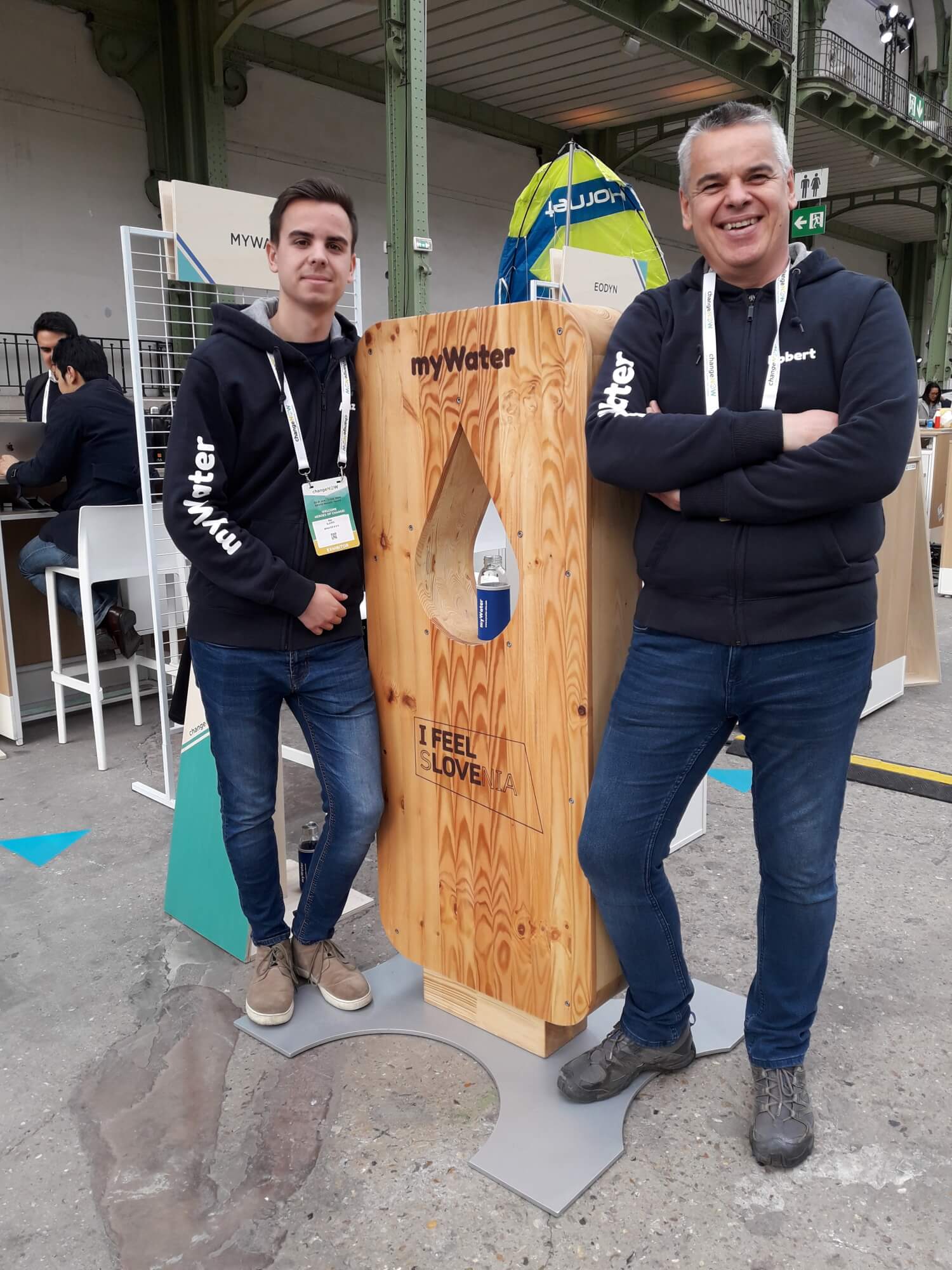
Aljaz and Robert Slavec with a water ATM at the ChangeNOW summit in Paris
While the dispenser has been shown internationally, to especially good reception at the ChangeNOW summit for change held in Paris last month, since autumn 2019 one pilot of myWater dispenser has been installed in Slovenia. That’s in Koper Municipality on the Semedela promenade, with the hope being that it can reduce the number of single-use plastic bottles thrown away by visitors and locals. The goal is to serve local water and within one year to reduce single-use plastic bottle waste by 100,000 units. The dispenser is made of Slovenian wood with a hole in the shape of a water drop to insert your bottle.
The next goal of myWater is to have its water dispensers at this summer’s World Expo in Dubai, while the firm is also working on a project to help places that aren’t connected to the water supply. With this, myWater aims to condense water vapour from the air and then clean it, so it’s good enough to drink.
You can learn more about myWater on the website, and also nominate the next city to have a myWater dispenser.
STA, 11 February 2020 - Last week's windstorms caused extensive damage to Slovenia's forests - some 100,000 m3 of trees were felled, according to initial estimates. Due to a risk of bark beetle infestation, the authorities have urged the tree clean-up and removal to be carried out as soon as possible using precautionary measures.
Agriculture Minister Aleksandra Pivec visited on Tuesday forest areas near Kranj in north-western Slovenia where the damage was most severe. In the Gorenjska region, some 70,000 m3 of trees were uprooted.
Pivec said that Monday's storm, which hit the north-east the most, had not been as damaging as last week's. However, in Slovenjska Bistrica the wind was uncovering roofs of more than 70 facilities, mostly apartment buildings and houses.
The minister pointed out that there had been two fatal accidents during work in forests recently, urging people to exercise extra caution and call clean-up services if they are not equipped or trained to do the work themselves.
The clean-up efforts should be sped up since the coming spring will potentially give rise to another bark beetle outbreak, with felled trees being the ideal hotspot for the development of the pest. Pivec called on forest owners to tap into EU funds for forest renewal.
The final estimates of the damage will be known in a week or two since the damage is scattered across the country. Slovenia has been quite lucky in seeing the best-case scenario given the severity of the storm, said Damjan Oražem, the head of the Forest Service.
STA, 4 February 2020 - Efforts to revive the small and heavily inbred population of lynx in Slovenia appear to be paying off as a lynx kitten has recently been captured and tagged, the descendant of a male that had been brought from Romania to diversify the population's gene pool.
Named Mala (tiny), the female kitten has been shown by genetic tests to be the descendant of Goru, one of two males captured in the Carpathian mountains that were relocated to Slovenia last year, and Teja, a female that is part of Slovenia's tiny population of the wild cats estimated to number just a dozen or so animals.
Goru had entered Teja's territory soon after he was released into the wild last May and researchers have been able to determine based on their GPS collars that the animals bred in early June.
The kitten was born in August and collared in January to improve her chances of survival after she is weaned.
"The GPS collar will allow colleagues to provide Mala with supplementary food to help her survive the critical months until full independence," said Hubert Potočnik, a researcher from the Ljubljana Biotechnical Faculty who is working on the Life Lynx project.
While researchers keep an eye on the kitten, preparations have already been launched for the relocation of additional lynx from Romania.
Two more animals have recently been captured in Romania and are to be resettled soon. The plan is to introduce a total of 14 animals from Romania to the shared Slovenian-Croatian lynx population over the course of several years, the Slovenia Forest Service said.
STA, 30 January 2020 - Slovenia's most polluted cities are located in the east of the country, with air quality improving compared to the situation half a century ago, shows a survey by the National Institute of Public Health. However, air pollution is still the key environmental factor affecting health and premature mortality rates, the newspaper Delo reports Thursday.
The air in Celje and Zagorje in the east, and Murska Sobota in the north-east is found to be the most polluted in Slovenia in terms of particle pollution. The daily concentration of dust particles in these cities exceeds the statutory limit more than 35 times per year.
Excessive particle pollution was also recorded in Maribor, as well as Hrastnik and Trbovlje which, like Zagorje, are situated in the industry-heavy Zasavje region, shows the survey on Slovenians' mortality rates in cities plagued by particle pollution.
Poor air quality has a significant detrimental effect on cardiovascular disease, according to the National Institute of Public Health. Between 2016 and 2018, when the study was conducted, almost 1,000 people died from pollution-related causes, accounting for almost 25% of all deaths in the cities in the study.
Up to 70 cardiac patients per year die due to air pollution health ramifications in Ljubljana, while in Celje citizens were exposed to excessive levels of PM10 particles in the air for almost a month and a half in total last year.
Due to air pollution, aggravated by traffic and, most notably, household emissions, Slovenia records 1,700 cases of premature deaths, shows the Environment Agency data.
In 1920, thirteen individuals and experts of the Section for Conservation of Nature at the Museum Society of Ljubljana presented the so called Spomenica (memorandum), a call for systemic environmental protection. Spomenica was presented in four main points to the Slovenian provincial government of the then Kingdom of Serbs, Croats and Slovenes.
At its anniversary, the Ministry of Environment and Spatial Planning published the four proposals of the Memorandum and provided a historic and current context for each of them:
- Request of Spomenica: "Alpine, mid-mountain (forest) and wetland protection parks should be established."
About 100 years ago: The Alpine Conservation Park was established in the Triglav Lakes Valley in 1924. Before that, part of the old Kočevje forests on the Auersperg estate were excluded from economic exploitation in 1888.
Today: At this point, all requirements have been met and even exceeded. Triglav National Park was established for the protection of that part of the Alps. The valley of the Triglav Lakes has been protected continuously from 1961 until today as part of the Triglav National Park, and especially as a natural monument of the Triglav Lakes Valley. As such it stands as a symbol of Slovenian environmental protection.
Today, the Slovenian natural environment is protected by one national park, three regional parks, 49 natural landscape parks, 56 nature reserves and 1,164 natural monuments, which together comprise 13 percent of the Slovenian territory.
Since 2011, Slovenia's natural parks have been integrated into the Slovenian Community of Parks, which is governed by fifteen protected area managers related by a common interest in nature conservation and preservation of the balance between effective environmental protection and cultural heritage through various activities. The Slovenian Community of Parks consists of: Triglav National Park, Kozjansko Regional Park, Notranjska Regional Park, Skocjan Caves Regional Park, Debeli rtic Landscape Park, Goričko Landscape Park, Kolpa Landscape Park, Ljubljansko Barje Landscape Park, Logarska Valley Landscape Park, Pivka Intermittent Lakes Landscape Park , Radensko Polje Landscape Park, Sečovlje Saltpans Landscape Park, Strunjan Landscape Park, Tivoli Landscape Park, Rožnik and Šišenski hrib, Skocjanski zatok Nature Reserve and Ormož Lagoon Nature Reserve.
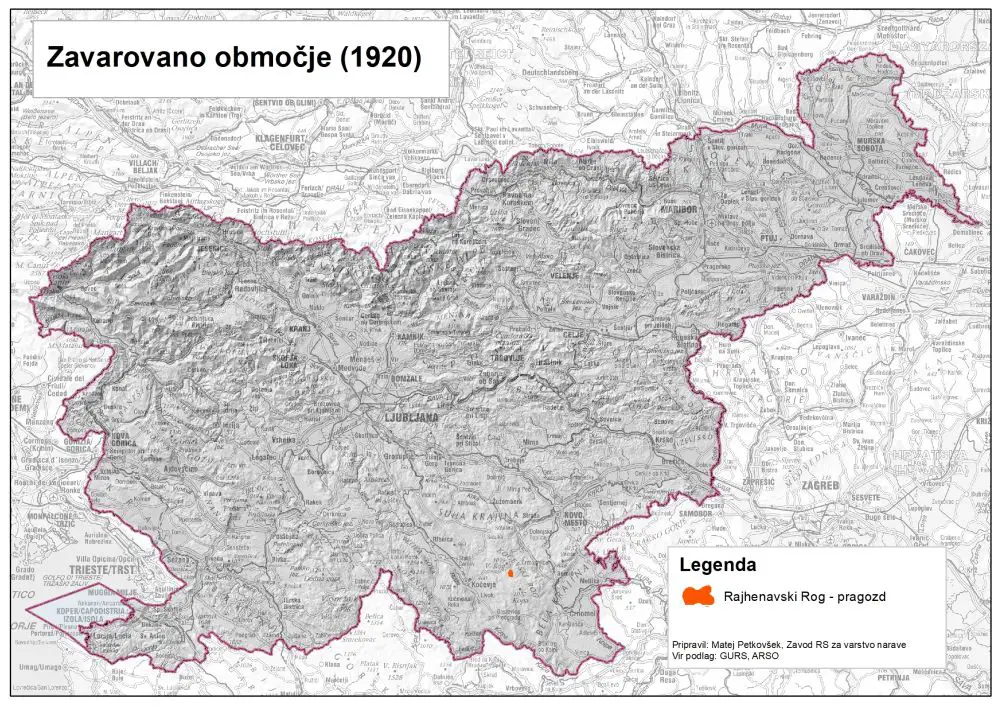
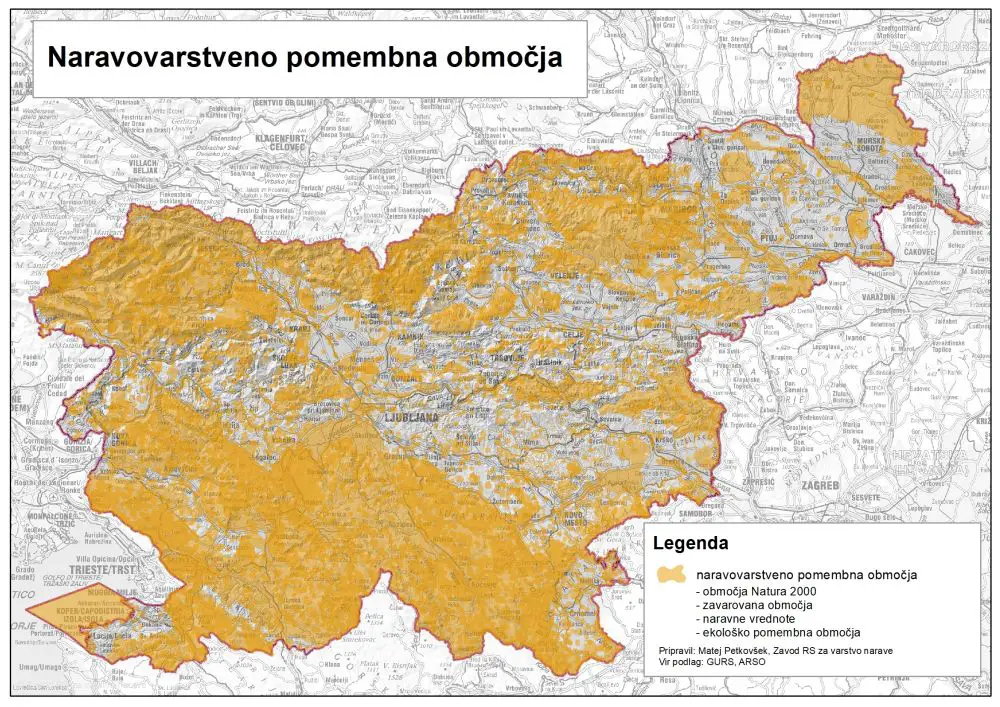
- Request of Spomenica: "The law should prohibit killing and destroying of rare animals and plants and of those typical of our environment or of scientific interest."
About 100 years ago: The trend for the protection of species in Slovenia began with the protection of Planika (Edelweiss) in 1896, and in 1910 the Law on Protection of Useful Birds was adopted. By the time when Spomenica was introduced, some species were already protected by the Fisheries Act and the Hunting Act. An explicit request for the protection of 68 species was made in Spomenica. Among them, there were 13 species of plants, 22 species of birds, all species of reptiles (22 species) and toads (two species) and four insect species: the Alpine longhorn beetle and Carabus gigas (orjaški krešič), Mountain Apollo butterfly and Carniolan bee. Protection of the bear, reindeer, Alpine ibex, chamois and Alpine marmot was also required.
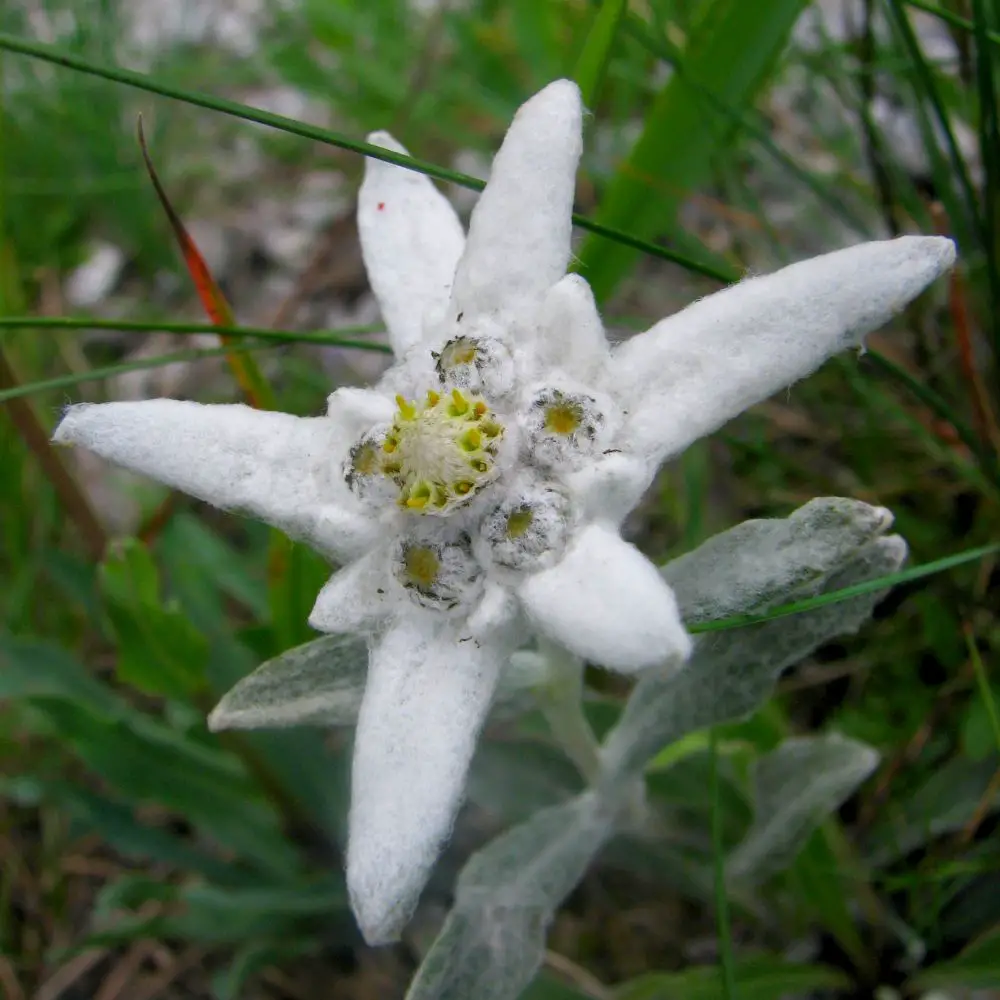
Today: About 19,000 animal and 4,000 plant species live in Slovenia, of which more than 2,000 species are listed as endangered. A government decree protects almost all plant and animal species cited by Spomenica and many others that are endangered. Among others, almost all species of amphibians, reptiles, birds, all bats, all large carnivores, cave bugs, all kinds of beetles and butterflies above the tree line are protected. More than 200 animal and more than 20 plant species are protected within the Natura 2000 network.
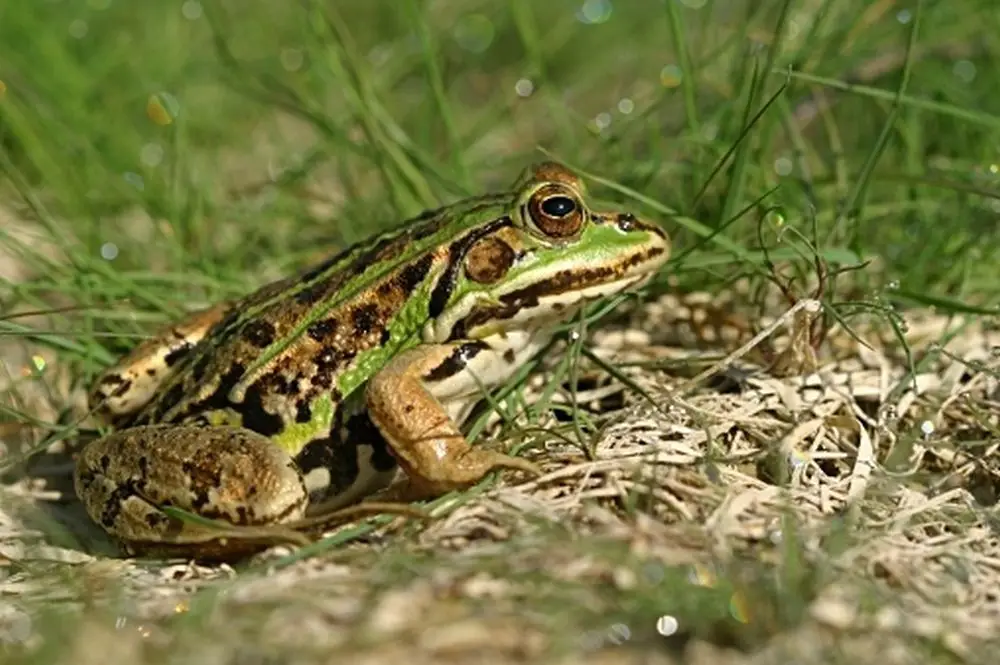
- Request of Spomenica: "Underground caves with interesting fauna and flora should be placed under supervision."
100 years ago: At the beginning of the previous century, the exploitation of cave fauna for profit was common. Spomenica points out that "various foreigners came and systematically terminated cave fauna". It proposes that caves be owned by the state and that entry into caves be controlled.
Today: All underground caves have been owned by the state since 2004. With regard to the rules of entry, they are divided into open caves with free entry, open caves with controlled entry and closed caves, which, due to their vulnerability, are only exceptionally accessible for scientific purposes with permission and under professional supervision.
All types of cave bugs are protected, and the law prohibits hunting, killing and removing from caves any animals that live or occasionally stay in them. Nonetheless, examples of poaching and trafficking of cave animals still occur.
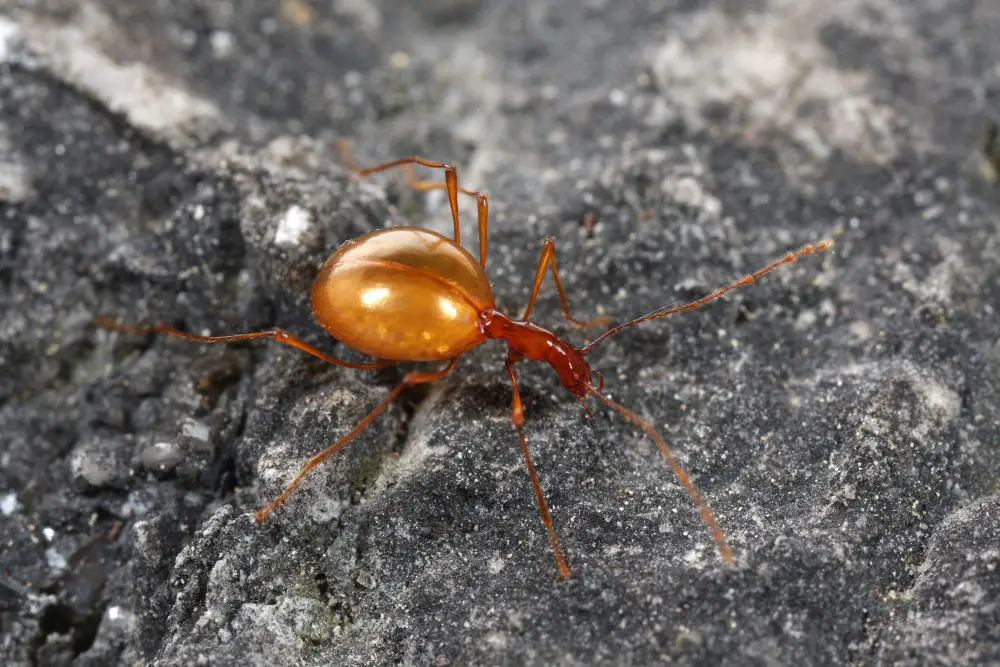
Waste and sewage pollution of the cave world is slowly improving due to mandatory treatment of waste water and the compliance with the prescribed standards of agricultural fertilization.
- Request of Spomenica: "Awareness should be raised among the general public for the conservation of nature in general"
Environmental protection is communicated by the Ministry of the Environment and Spatial Planning, the Institute of the Republic of Slovenia for Nature Conservation and the managers of protected areas. A range of activities are carried out by non-governmental organizations from different nature protection fields – be it those who deal with groups of species or those that deal with areas. Important contributors to the dissemination of knowledge are also the media and their reports.
Although pressures on the environment today are higher than ever and biodiversity is on decline globally, and in Slovenia, the country ranks among the top in the world according to its nature preservation endeavours.
In an opinion poll on Natura 2000, conducted by Parsifal in Slovenia in 2019, more than 80% of Slovenian respondents are prepared to avoid visiting a certain area, adapt the use of fertilizers, remove invasive alien species or not cut in a part of the forest, or cut certain trees, in order to protect nature (Parsifal, 2019).
That conservation of nature is one of the fundamental national values, as also proven by the high ranking of Slovenia in various international lists. Yale University ranked Slovenia as the fifth greenest country in the world, and National Geographic as the greenest country in the world. Slovenia also ranks fourth in the Legatum Prosperity Index in the environmental category.
Today, 56.9% of the sea and land of the Republic of Slovenia is under nature protection measures; in the European Union Slovenia ranks first by the share of Natura 2000 (network of nature protections areas in the EU) protected areas in the country, which amounts to over 37%.
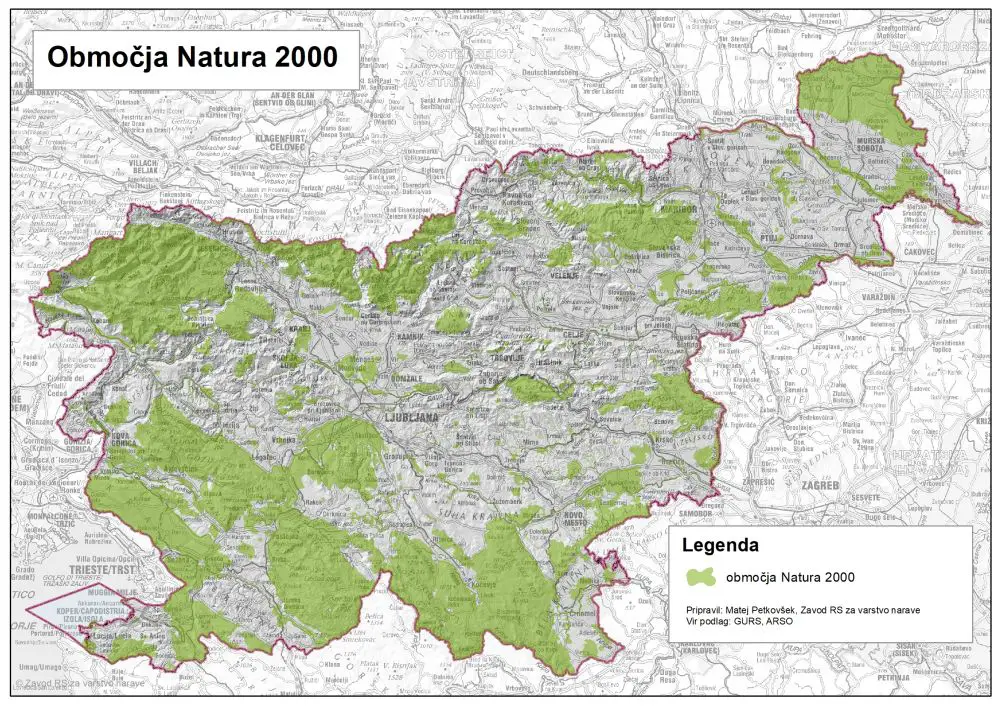
STA, 22 January 2020 - Slovenia has sought to convince the European Commission to loosen rules on the protection of large carnivores when populations of the animals are booming, but EU officials appear to have poured cold water on the idea at a meeting at the Environment Ministry this week.
The Brussels officials said the key goal of European policies was cohabitation with large carnivores, which means prioritising protective measures and paying out compensation in the event of livestock loss.
"The extreme measure in the event protective measures are not working is culling, provided ... that the favourable state of the population is being maintained and does not worsen," the ministry said in a press release on Wednesday.
It is the job of the state to strengthen communication and awareness raising, especially in the countryside and in areas where populations of large carnivores are growing, the EU officials were quoted as saying.
The statement came a day after the ministry organised a meeting on Tuesday featuring EU officials and the members of a national task force for the management of brown bear, wolf and lynx.
The populations of brown bear and wolf have been expanding in Slovenia in recent years, leading to push-back from locals living in affected areas and demands that culling, the principal management measure used in Slovenia, be intensified.
In 2019 just over 170 bears were culled out of a rapidly rising population that is estimated to number just under 1,000 animals, and five of the estimated 88 wolves on Slovenian territory.
But despite the extensive culling, Slovenia had sought additional loosening of EU-wide rules on protected species to make it even easier to control the population.
Environment Minister Simon Zajc thus called for a more flexible approach at an EU ministerial in December, with the argument that the specifics of each country ought to be taken into account.
The EU officials have now said that no such change is currently planned. Procedures may be initiated assuming such motions are backed by hard science, but the procedure is exceptionally long, the Environment Ministry said in a release after the meeting.
All our stories on bears in Slovenia are here
Slovenian Researchers Developing Ocean-Cleaning Microplastic Filter Based on Jellyfish Mucus (Video)
Euronews reports that Slovenian researchers at the National Institute of Biology (Nacionalni inštitut za Biologijo), working in cooperation with a team from Israel, are developing a way to remove microplastic particles from the oceans – using jellyfish mucus. The gelatinous mucus, which the jellyfish secrete when under stress, is being used to develop a TRL 5-6 prototype microplastics filter that could, if successful, could be one approach to reduce sea pollution.
Slovenia is especially well-suited for such work, as the Adriatic often suffers from “jellyfish blooms”, destructive invasions of these simple yet fascinating creatures, caused by climate change and overfishing.
The work, which is funded by the EU’s Horizon 2020 initiative, is part of the broader GoJelly project, which is also examining the use of jellyfish, caught or farmed, in agricultural fertilisers – due to the high levels of phosphate, nitrogen and potassium they contain – and as a food, with jellyfish already consumed in parts of Asia (see the related papers “Mediterranean jellyfish as novel food: effects of thermal processing on antioxidant, phenolic, and protein contents” and “The attitudes of Italian consumers towards jellyfish as novel food”).
You can learn more about the various GoJelly projects here, while you can monitor jellyfish blooms in the Adriatic here.
People come to Slovenia for many reasons, some more unusual than others, and “en route to Mongolia” has to be one of the more interesting. Even more so when done on the back of a bicycle and with the aim of collecting good news about tackling the climate crisis on the way. So when we came across the story of Mike Elm we had to find out more, and sent along some questions that he kindly answered in between time in the saddle.
What brings you to Slovenia?
I’m currently on the “New Story Ride”, an epic bike-packing adventure that started in Vienna on 24th November 2019 and is heading towards Mongolia over the next two years. The New Story Ride was inspired by my partner Rosie Watson, who set off from the UK in August this year on the New Story Run [see more about that here].
Through the ride I’m finding and telling stories of how people are living and creating businesses and systems that make for a happier, more cooperative, compassionate and fun world whilst tackling the climate crisis.
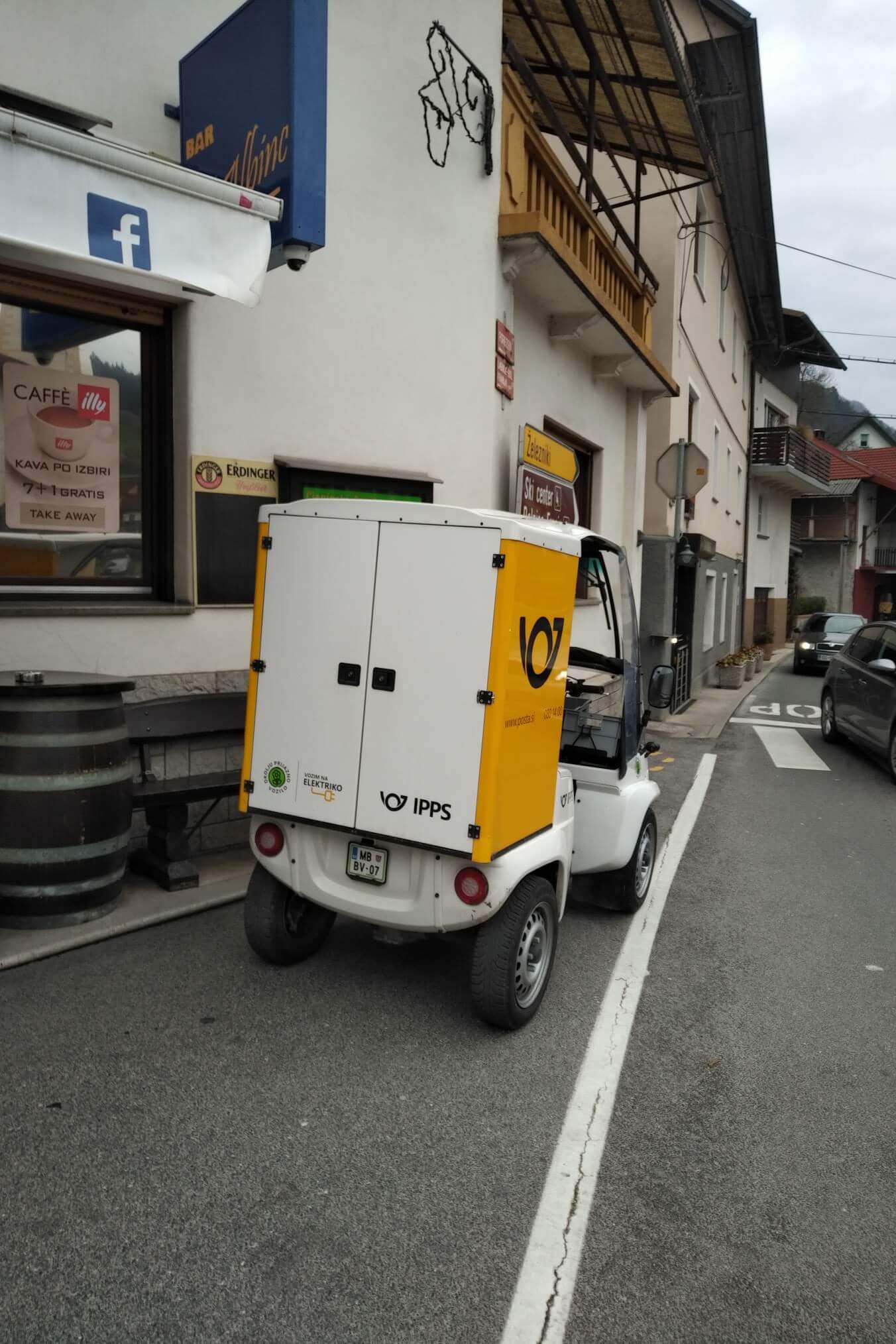
E(lectric) mail in Cerkno
How are you getting around?
I’ve been lent a Ridgeback 603 GS Mountain which is a sturdy steel-framed mountain bike, with 26 inch wheels. It’s got chunky but slick tyres, so it can handle a decent amount of off road.
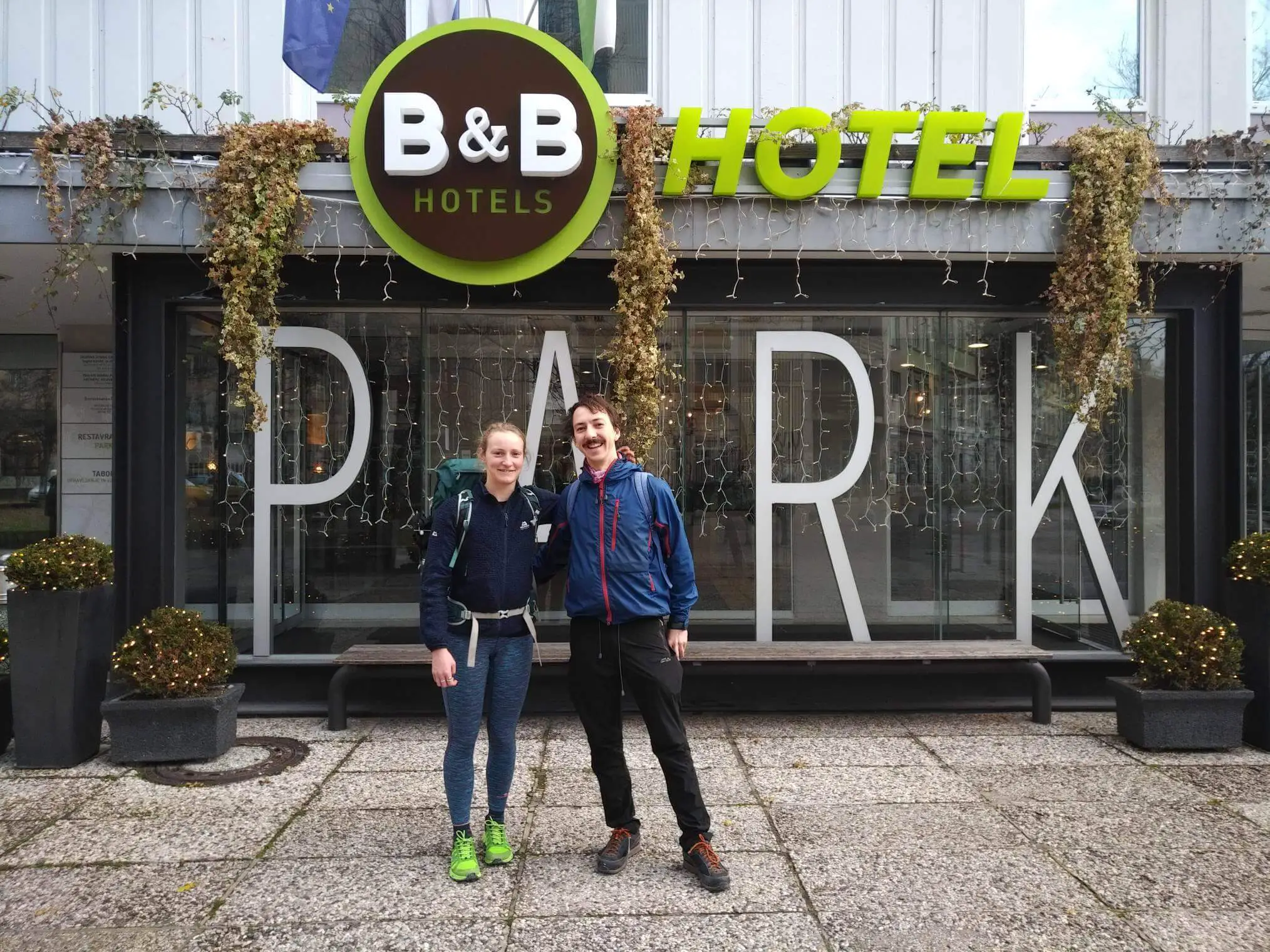
With Rosie at Hotel Park
Where have you been so far?
I entered Slovenia over the Ponte Victoria Emanuelle III near Breginj, and was kindly taken into a house for the night in Homec. From there I went to Slap ob Idrijici where I was again generously hosted after I asked if I could camp. Then because of a closed road I ended up with a big snowy cycle to Škofja Loka along the incredible rivers, with a swim in Soča. Then from Škofja Loka I went to Ljubljana in the snow, and stayed there four days. I met Rosie there and we were generously lent an apartment for three nights and then the very eco-friendly B&B Hotel Park hosted us for the final night.
From Ljubljana I went along the beautiful Krka valley, camped one night just at the start of it. Then was hosted in Novo Mesto before going to Zagreb.
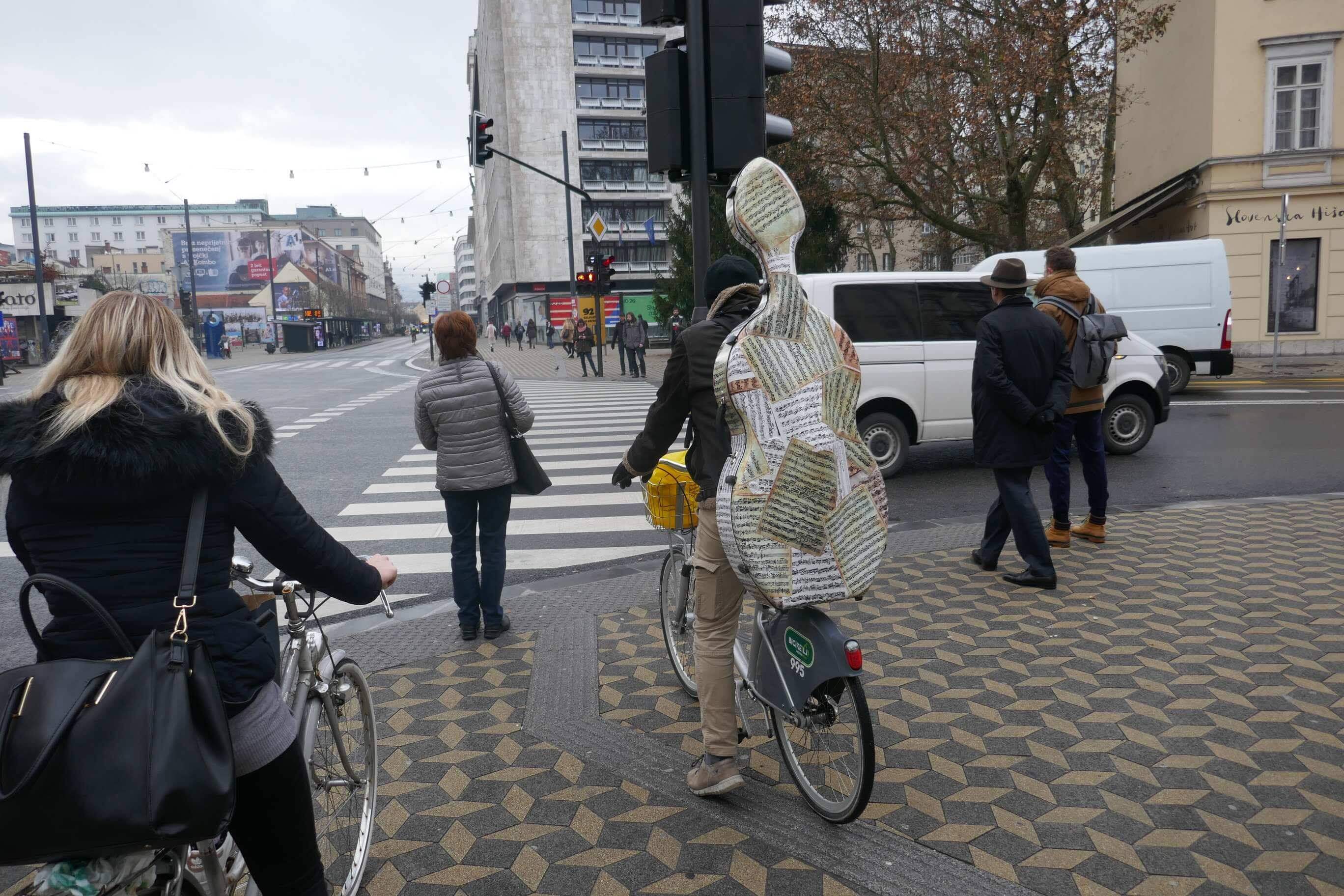
The creative use of bikes in Ljubljana
What are your impressions of the country?
This was my third visit to Slovenia – I’ve only ever come on bicycle. I think it’s a beautiful, understated country. I love seeing the vegetables growing outside people's houses across the country. I hadn’t appreciated how impressive Ljubljana's people-friendly, car-free, city centre is before. This time I really saw how special it is, and how much others should learn from the city!
Any highlights?
When I knocked on a door in Homec at 6pm it was dark and cold. I asked if I could camp in their garden, and they quickly agreed, but then asked wouldn’t I rather sleep indoors?
This was the third time I’d ever knocked on a stranger's door and asked if I could camp, but the first time someone had taken me in. The couple were so kind, and their house was absolutely beautiful, it was a really special experience and I left with such a warm feeling, and many treats for the road!
This started off a string of generosity from people right across the country.
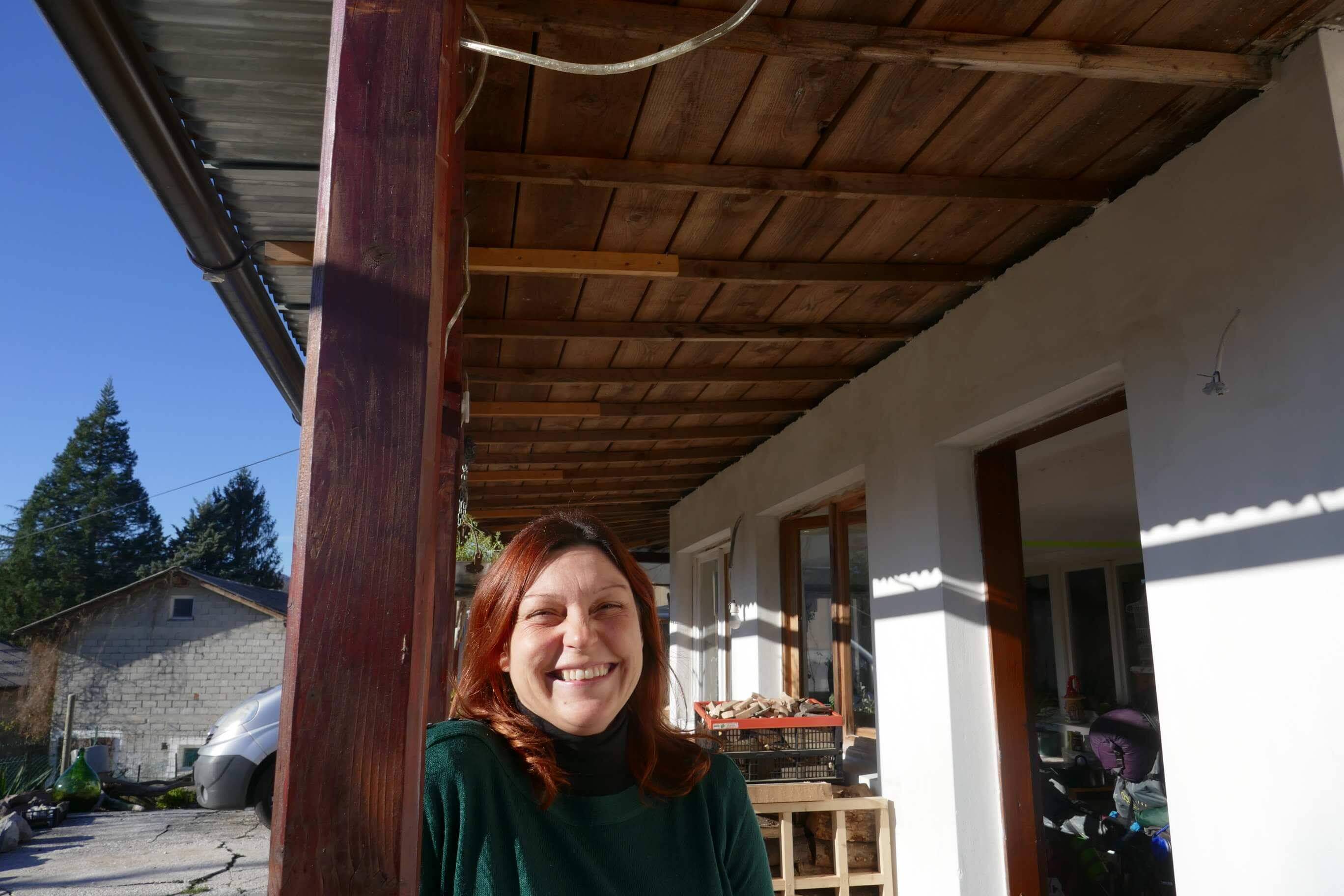
Urška my host in Homec
Any problems?
On the way to Škofja Loka I’d stopped in Cerkno for a coffee recharge and got chatting to a friendly guy in the café. He’d told me about a natural heated pool somewhere past Podpleče. I couldn’t resist trying to find it, instead of going along the more direct road to Škofja Loka.
The road where I thought the pools should be had a sign saying it was closed, I guessed maybe that was only for cars. I’d already gone up and down over a big hill so I wasn’t about to turn around. The road was closed, though, with a huge mound of rubble and diggers blocking the way.
I backtracked a kilometre, and found the road leading to Mrovljev Gric, which was very uphill, and as I started up it began to snow. By the time I was at the top of the hill there was snow covering everything and then: The first ‘crash’ of the New Story Slide… I mean Ride.
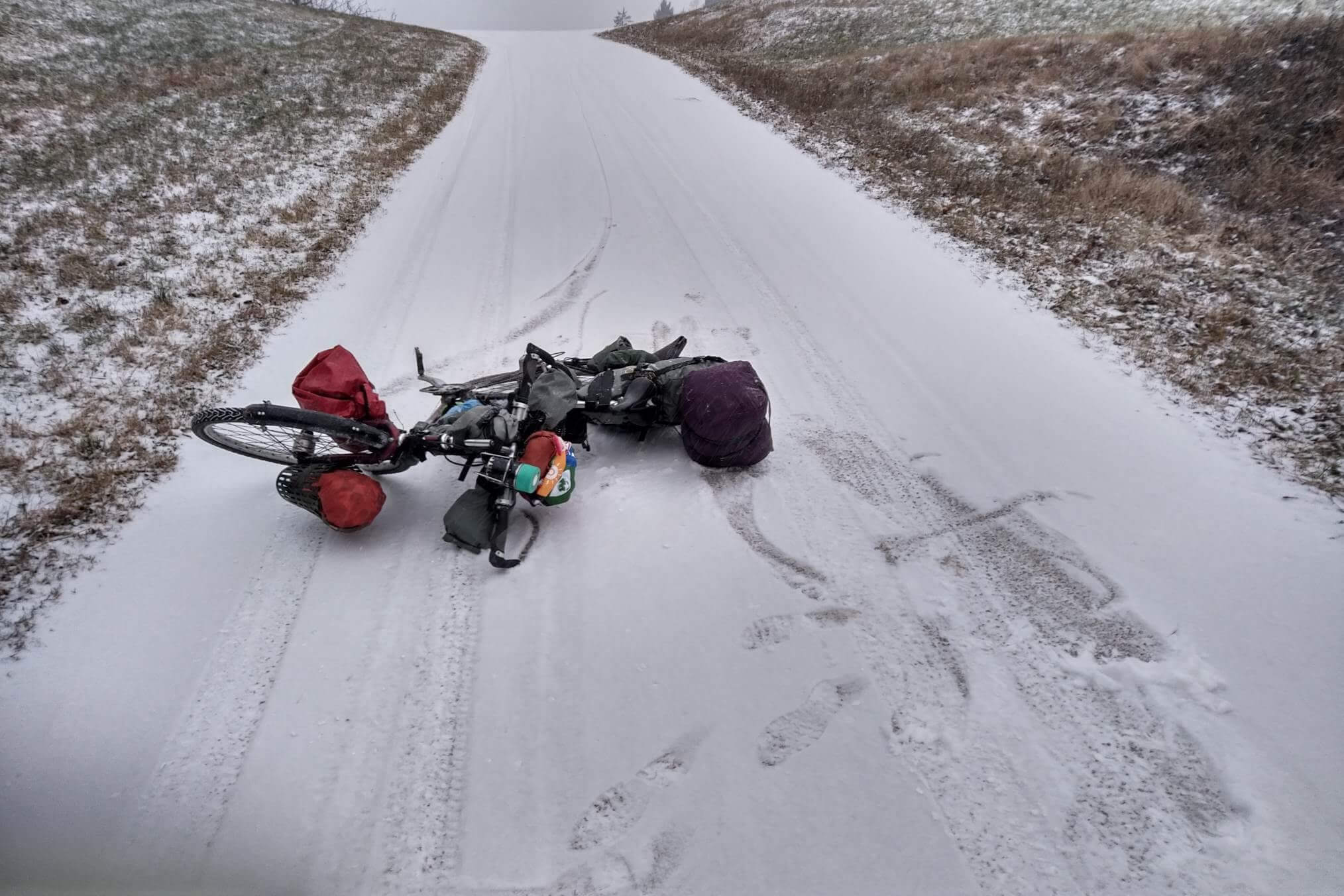
The hour and half of penguin-footed pushing the bike down the snowy hill in the dark was one thing, but the final 20km on a road proved the biggest challenge.
The relief of being off the hill evaporated, or was smothered by the slippery new snow, and the dark reality of a road populated by obnoxiously fast cars. Driving is one thing, but doing so close to a cyclist and occasionally beeping is very unnecessary. It was almost with tears in my eyes I met Rosie at Ziva and Matej’s house outside Škofja Loka. Accompanied by Prince’s “Purple Rain” blaring out of my coat.
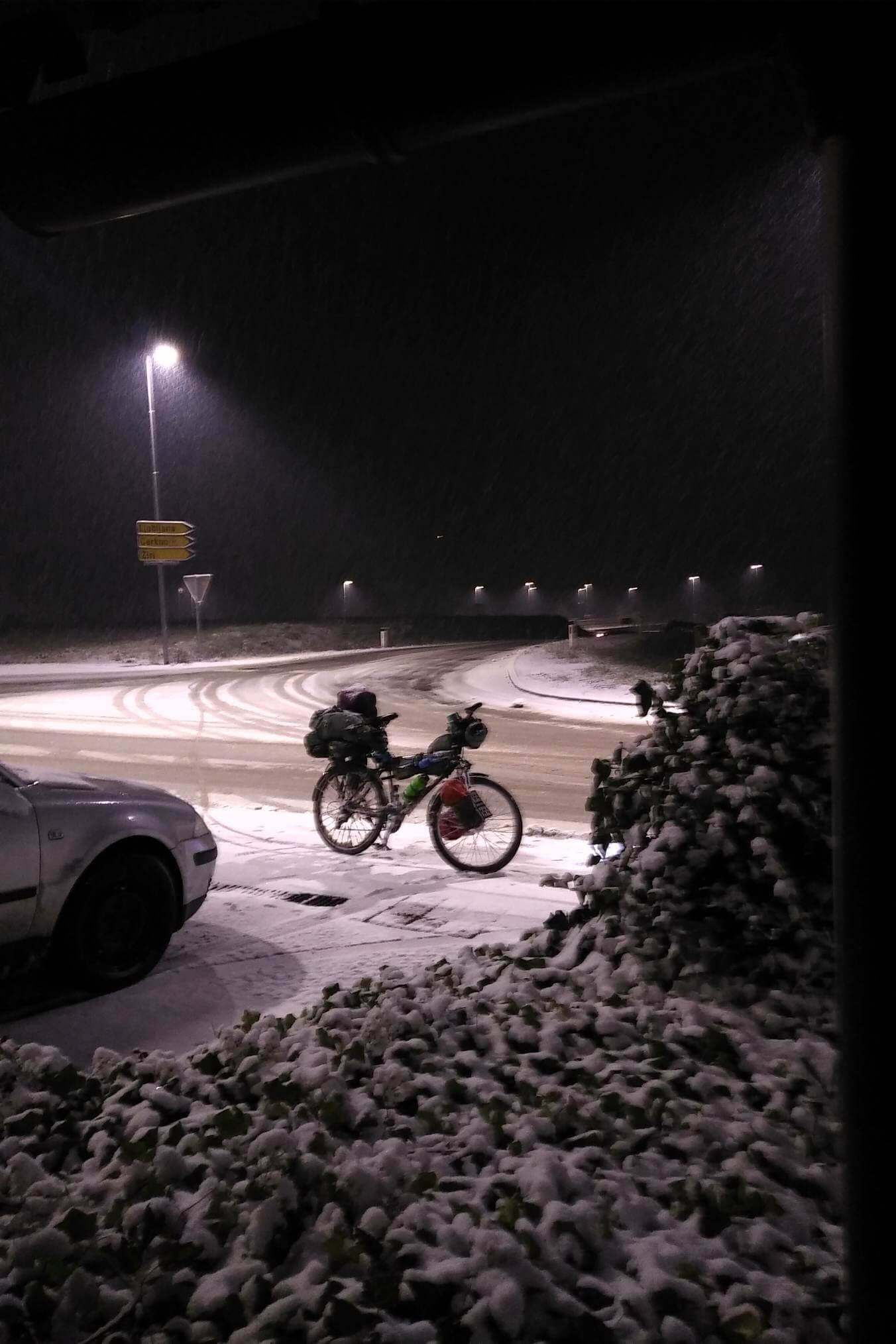
How can people help or learn more about your project?
The most important thing is for people to start creating and telling a new story, one that makes a better, happier, more fun world that isn’t going to end in climate catastrophe. What that means is going to be different for everyone. People can help the New Story Ride directly through offering places to stay, a meal, or contributing to the GoFundMe page, and reaching out to share stories that could be visited along the way.
You can follow my story on the website, NewStoryRide, look out for #NewStoryRide and follow on Instagram/Twitter: @elmers87 or the Facebook page: The New Story Ride
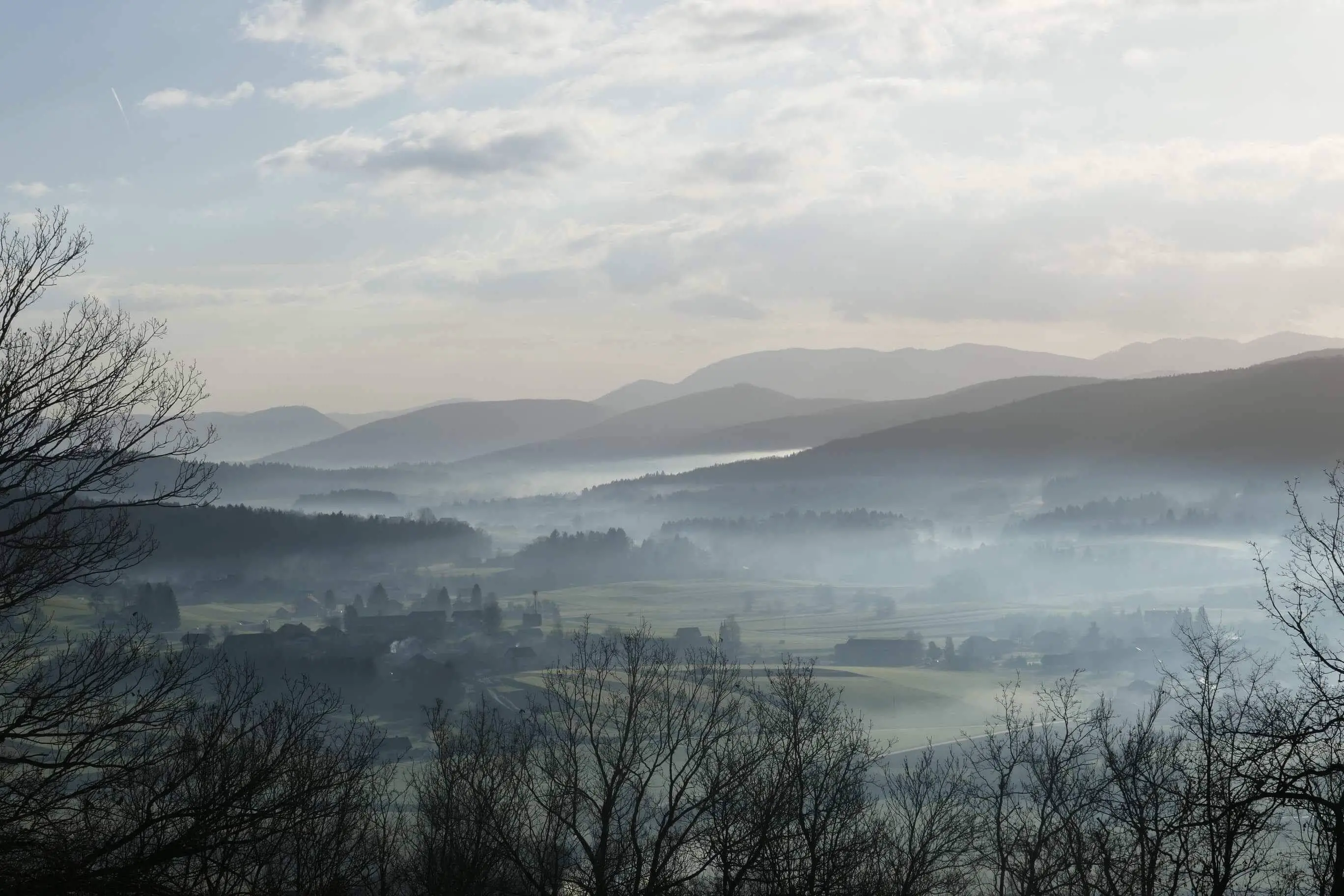
Krka valley
Where are you going next?
I’m now in Croatia, on the car-free island of Silba. I’m looking for pieces of the new story as I go down the coast, intending to visit other islands too, and then I may go to Bosnia and Herzegovina and Serbia if the winter isn’t going to be too hard. I also plan to go to Albania, as the mayor of Tirana is doing interesting work to make the city bike and people friendly. Then maybe Greece, before Bulgaria to take the boat across the Black Sea to Georgia, Azerbaijan and then most likely across the Caspian Sea, if it’s not possible to visit Iran. Then intend to travel through Kazakhstan, Uzbekistan, Tajikistan, Kyrgyzstan, back to Kazakhstan and then either through some of Russia or China to reach Mongolia. Simple, right?
You can learn more about Mike’s story on his website, Facebook, Twitter or Instagram, and if you have a story about Slovenia you’d like to share with our readers please get in touch at This email address is being protected from spambots. You need JavaScript enabled to view it.




